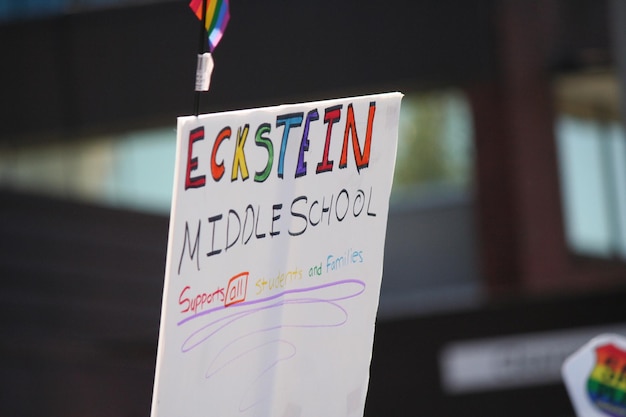US Education Reform: A Deep Dive into New Federal Initiatives

US Education Reform: Examining the New Federal Initiatives and Their Potential Effects encompasses a range of federal policies and programs aimed at reshaping the American education system, addressing issues such as equity, access, and student achievement to prepare students for the demands of the 21st century.
The landscape of American education is continually evolving, and recent years have witnessed a surge of new federal initiatives designed to address long-standing challenges and prepare students for future success. Understanding these changes is crucial for educators, parents, and policymakers alike. This article delves into US Education Reform: Examining the New Federal Initiatives and Their Potential Effects, providing a comprehensive overview of the key policies shaping the future of education in the United States.
Understanding the Current State of US Education
Before diving into specific reforms, it’s important to understand the current state of the US education system. This involves recognizing both the strengths and weaknesses that pave the way for new initiatives. By knowing the baseline, we can better assess the potential impact of these federal efforts.
Key Challenges Facing US Education
A multitude of challenges currently affect the quality and equality of education across the United States. These hurdles range from funding disparities to achievement gaps.
- Funding Disparities: Unequal distribution of resources between school districts, leading to significant differences in educational opportunities.
- Achievement Gaps: Persistent differences in academic outcomes between students from different racial, ethnic, and socioeconomic backgrounds.
- Teacher Shortages: Difficulties in attracting and retaining qualified teachers, particularly in high-need areas and subjects.
- Technology Access: Uneven access to technology and digital resources for students, which is critical in the modern educational landscape.
Addressing these challenges is central to the goals of US education reform.

The need for reform is often driven by the desire to create a more equitable and effective education system. This includes preparing all students for college, careers, and civic engagement.
The Every Student Succeeds Act (ESSA)
The Every Student Succeeds Act (ESSA) is a landmark piece of legislation that reauthorized the Elementary and Secondary Education Act (ESEA). ESSA represents a significant shift in federal education policy, granting states more autonomy in designing their own accountability systems.
ESSA’s Key Provisions
ESSA replaced No Child Left Behind (NCLB) and introduced several important changes to how schools are held accountable for student performance.
- State Accountability Plans: States are required to develop their own accountability plans, which must include multiple measures of student success.
- Emphasis on Equity: ESSA aims to ensure that all students have access to a high-quality education, regardless of their background or zip code.
- Targeted Support: States must identify and support struggling schools and student groups to close achievement gaps.
- Local Control: ESSA provides states and local districts with more flexibility in using federal funds to meet their unique needs.
ESSA is designed to promote innovation and continuous improvement in education.
ESSA seeks to balance federal oversight with state and local autonomy, providing a framework for comprehensive education reform.
Investing in Early Childhood Education
Recognizing the critical importance of early childhood experiences, there’s been a growing emphasis on expanding access to high-quality early childhood education programs. These initiatives aim to provide young children with a strong foundation for future learning.
Federal Initiatives for Early Learning
Several federal programs support early childhood education, including Head Start and the Child Care and Development Fund.
- Head Start: A comprehensive early childhood education program for low-income children, providing services such as education, health, and nutrition.
- Child Care and Development Fund (CCDF): Provides funding to states to subsidize child care services for low-income families.
- Preschool Development Grants: Grants awarded to states to expand or enhance their preschool programs.
These programs are crucial for promoting school readiness and reducing achievement gaps.
Investing in early childhood education is seen as a key strategy for improving long-term educational outcomes and promoting social mobility.
Promoting STEM Education
Science, Technology, Engineering, and Mathematics (STEM) education has become a national priority. Preparing students with strong STEM skills is essential for maintaining America’s competitiveness in the global economy.
Strategies for Enhancing STEM Education
Various federal initiatives and programs are aimed at strengthening STEM education in schools across the country.

- STEM Education Grants: Provide funding to schools and organizations to implement innovative STEM programs and initiatives.
- Teacher Training: Support for professional development opportunities for STEM teachers, ensuring they have the knowledge and skills to effectively teach STEM subjects.
- Partnerships with Industry: Collaboration between schools and businesses to provide students with real-world STEM learning experiences.
- Encouraging Underrepresented Groups: Efforts to increase the participation of women and minorities in STEM fields.
These strategies are vital for nurturing the next generation of STEM leaders.
STEM education initiatives are designed to foster critical thinking, problem-solving skills, and creativity among students.
Addressing the Digital Divide
The digital divide – the gap between those who have access to technology and those who do not – remains a significant barrier to educational equity. Federal initiatives are focused on ensuring that all students have access to the technology and digital resources they need to succeed.
Bridging the Technology Gap
Several federal programs aim to expand access to technology and digital resources for students, particularly those from low-income families and rural areas.
- E-Rate Program: Provides discounts on internet access and telecommunications services for schools and libraries.
- Digital Literacy Programs: Offer training and resources to help students and adults develop essential digital skills.
- ConnectHomeUSA: A program that aims to connect low-income families with affordable internet access and devices.
These programs are critical for ensuring that all students can participate fully in the digital age.
Closing the digital divide is essential for promoting educational equity and preparing students for the demands of the 21st-century workforce.
Supporting Teacher Development and Retention
Teachers are the backbone of the education system, and federal initiatives are focused on supporting their professional growth and improving retention rates. Attracting and retaining high-quality teachers is essential for student success.
Strategies for Teacher Support
Various federal programs support teacher development and retention, including loan forgiveness programs, professional development grants, and mentorship programs.
- Teacher Loan Forgiveness Programs: Provide financial assistance to teachers who work in high-need schools or subjects.
- Professional Development Grants: Support professional development opportunities for teachers, helping them stay up-to-date on the latest research and best practices.
- Mentorship Programs: Pair experienced teachers with new teachers to provide guidance and support.
These strategies are vital for creating a supportive and rewarding environment for educators.
Investing in teacher development and retention is seen as a key strategy for improving student outcomes and strengthening the education system as a whole.
| Key Point | Brief Description |
|---|---|
| 🏫 ESSA Act | Grants states more autonomy in designing education accountability systems. |
| 👶 Early Childhood Education | Focuses on expanding access to high-quality programs like Head Start. |
| 🧪 STEM Education | Aims to strengthen STEM skills through grants, teacher training, and industry partnerships. |
| 💻 Digital Divide | Seeks to ensure equal access to technology with programs like E-Rate. |
Frequently Asked Questions
▼
ESSA is a US law passed in 2015 that reauthorized the 1965 Elementary and Secondary Education Act (ESEA). It gives states more power over their education systems.
▼
The federal government supports early childhood education through programs like Head Start and the Child Care and Development Fund, providing resources for low-income families.
▼
Strategies include STEM education grants, teacher training programs, and partnerships with local businesses to provide real-world experiences for students.
▼
The digital divide is the gap between those who have and those who lack access to technology. Initiatives like the E-Rate program and ConnectHomeUSA are helping to bridge this gap.
▼
Teachers can be supported through loan forgiveness programs, professional development grants, and mentorship opportunities, which help them grow and stay in their field.
Conclusion
In conclusion, US Education Reform: Examining the New Federal Initiatives and Their Potential Effects, signifies a continuous effort to improve educational outcomes for all students. By understanding these federal initiatives and their potential effects, educators, parents, and policymakers can work together to create a more equitable and effective education system.





